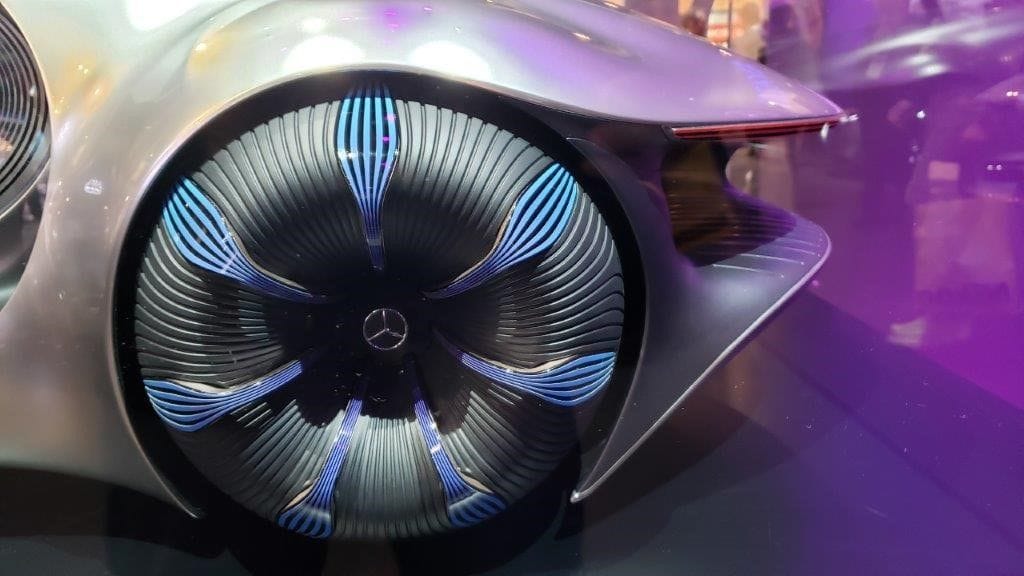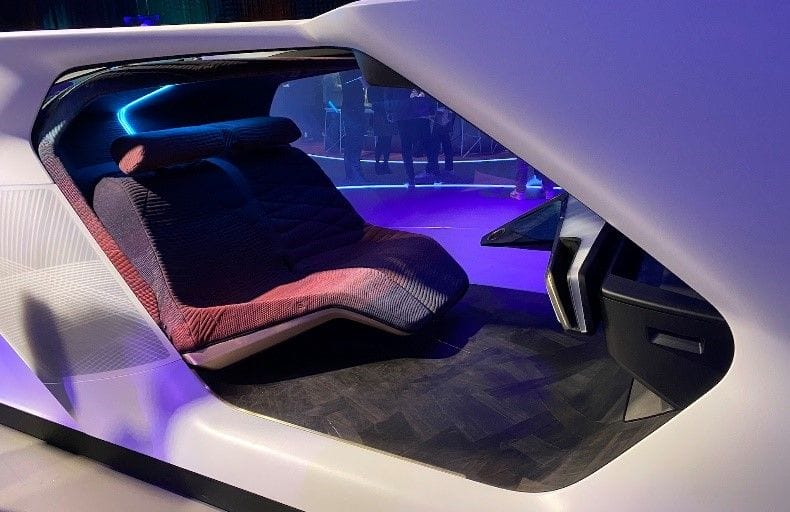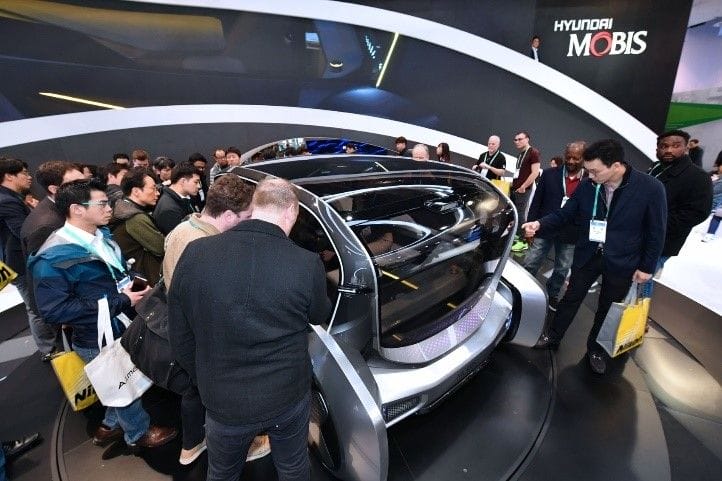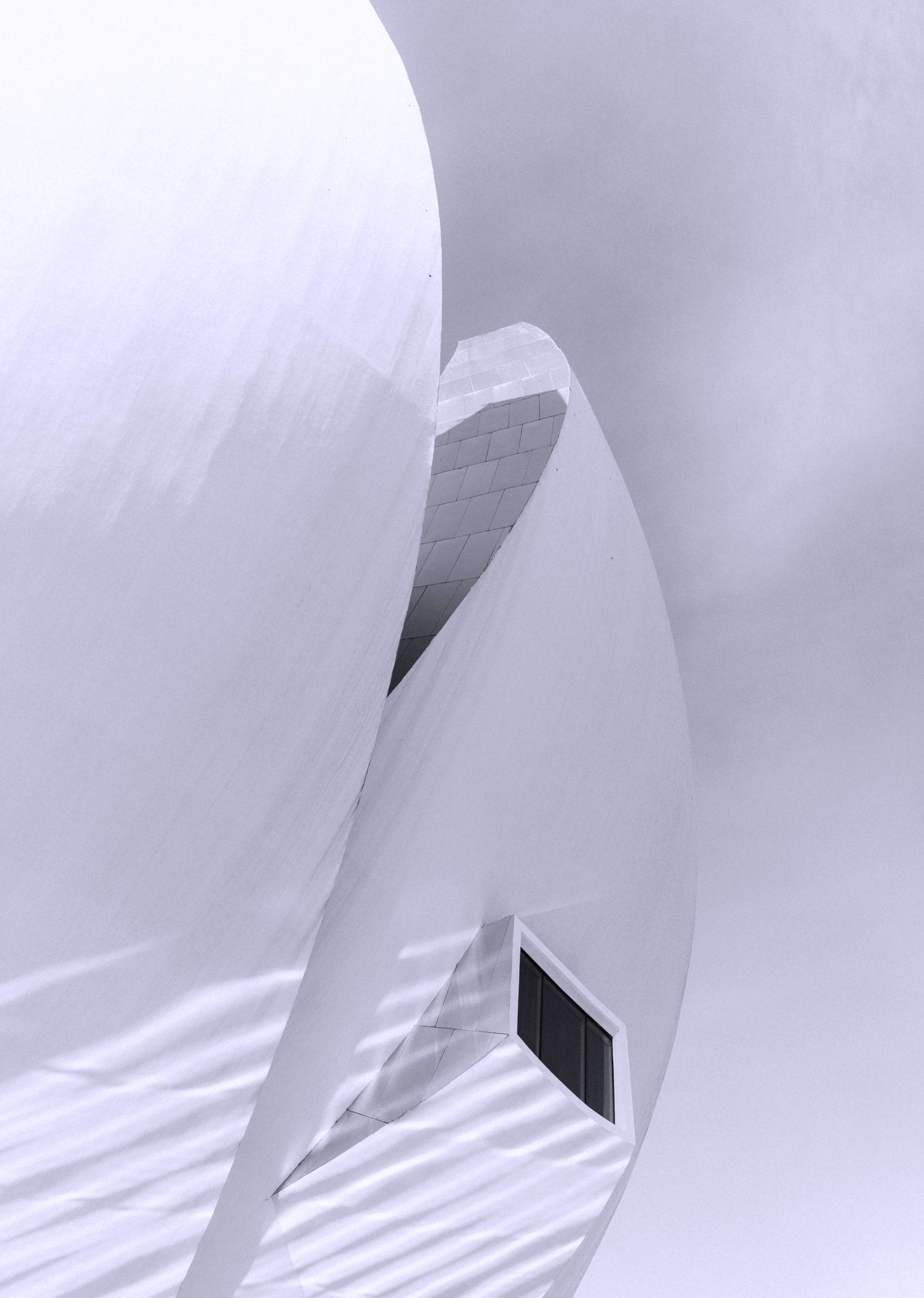Our teams flew to Las Vegas for the Consumer Electronics Show 2020, from January 7 to 10, to detect and anticipate innovations for our customers and the Group. After three days there, Jérôme Malzac, Innovation Officer at Micropole, shares with us a selection of the latest innovations in mobility.
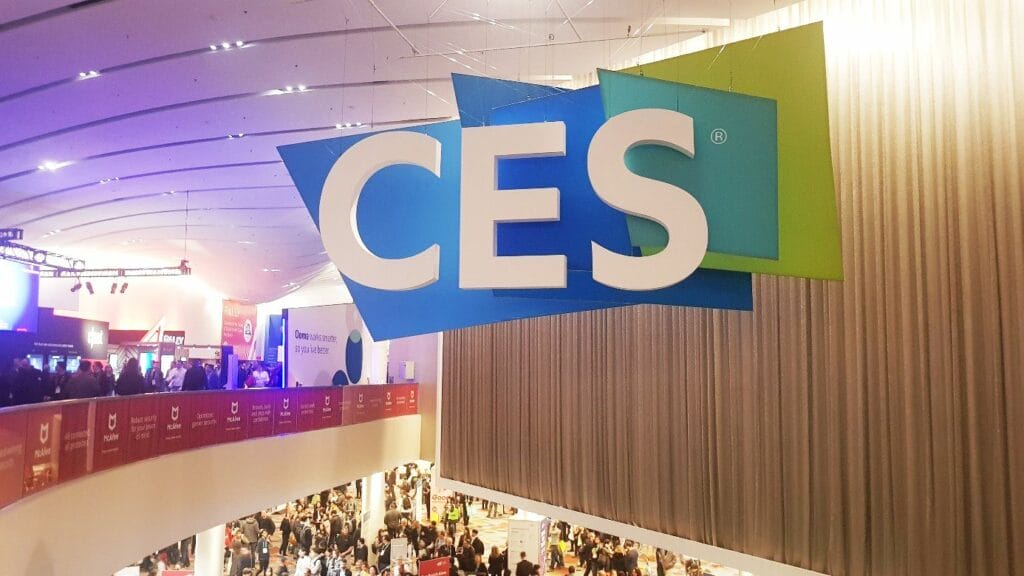
Reinventing urban mobility
Among the key themes of the 2020 edition of CES is the automotive show, which is an exploratory concentration of the mobility industry. A great opportunity to discover, on the one hand, the basic components, supplies, equipment and automobiles, and on the other hand, the vehicles that result from this assembly. It's a surprising journey through the entire manufacturing chain: in a ten-minute walk, you can see components such as the latest lidars, 3D cameras with on-board AI, smart seats and connected license plates, as well as flying and driving prototypes that offer a glimpse of what tomorrow's mobility will probably be like. Between the many OEMs, such as Bosh, Faurecia and Valeo, and the many major manufacturers, such as Nissan, Hyundai, Ford, Audi, Mercedes and BMW, it was difficult to determine whether there were more or fewer exhibitors at this edition than at the previous two editions
Sony and Amazon, who were present for the first time in the show dedicated to automotive and mobility, made the buzz! Amazon was particularly visible in the automotive section of CES in recent years thanks to its victory over Google in the field of in-car assistant. Each manufacturer displayed the Amazon logo on its booth to explain that Alexa was haunting its cabin. Among the big brands, only Ford had chosen to partner with Google in this field. This year, Amazon had its own booth: no more question of displaying a simple logo to show its ambitions in this field. In 2020, the giant shows its will to"accelerating the future of mobility".
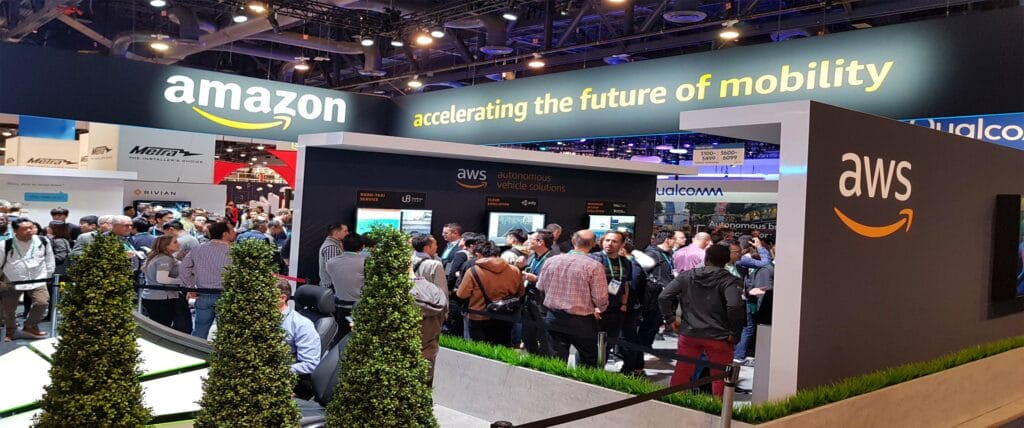
Amazon wants to make its voice assistant a fixture in our cars and its cloud and technology know-how a central hub of the automotive industry of tomorrow. Several announcements have been made this year, including:
the security of the IoT embedded in vehicles in collaboration with BlackBerry;
the simplification of the piloting of the various functionalities of a car;
the simplification of the payment at the gas station via voice thanks to Alexa (no more need for a credit card!).
And everyone is getting involved: even Lamborghini is happy to announce the integration of Alexa in their latest "Huracan Evo"!

Finally, in a stroke of absolute genius, Amazon has also announced the "Echo Auto" for sale worldwide. This will allow all these services to be embedded in older cars that are not already equipped with the voice assistant as soon as they are manufactured.
Sony, with its Vision-S electric concept car, is probably not aiming to become a car manufacturer but is showing its willingness to continue to be a major supplier of sensors, cameras and sensors for the mobility market.
Announcements & innovations of the main brands
Among the most visible brands each year (Ford, Nissan, BMW, Audi...), I award the prize for the most beautiful concept car to Mercedes with its "Vision AVTR".
Inspired by the movie Avatar to imagine its futuristic vehicle, Mercedes attracts attention with luminous wheels in the shape of jellyfish, openings on the rear window and very light and airy curves on the outside and inside of the vehicle.
I was also struck by its desire to revolutionize human-vehicle interaction: gesture recognition, haptic controls on the center console, advanced facial analysis of passengers to anticipate or trigger actions, and voice everywhere!
Announcements & innovations of the main brands
Among the most visible brands each year (Ford, Nissan, BMW, Audi...), I award the prize for the most beautiful concept car to Mercedes with its "Vision AVTR".
Inspired by the movie Avatar to imagine its futuristic vehicle, Mercedes attracts attention with luminous wheels in the shape of jellyfish, openings on the rear window and very light and airy curves on the outside and inside of the vehicle.
I was also struck by its desire to revolutionize human-vehicle interaction: gesture recognition, haptic controls on the center console, advanced facial analysis of passengers to anticipate or trigger actions, and voice everywhere!

Finally, BMW and Audi also displayed some innovations that will transform our daily lives in the years to come.
Audi's AI:ME aims to be the first car to show empathy. It recognizes the passengers and immediately adapts the interior, the seats, the temperature, the music and even the smell... to their preferences! IAE (Audi Intelligence Experience) is in charge of analyzing and integrating the passengers' habits and desires. I also liked the double retractable screen that is positioned in front of the windshield and is able to vary its transparency: you can go from a 3D head-up display, in manual driving mode, to a TV screen to watch a movie or a series, when the car is in autonomous mode.
BMW's ZeroG is a very comfortable seat, which is even more appreciated after many hours of walking the aisles. The seat reclines up to 60° and has a safety belt that follows the movement. The integrated speakers provide a different sound for each seat and, in terms of safety, the airbags integrated directly into the seat guarantee a cocoon of protection in the event of an accident.
BMW also presented its I3 Urban transformed for the VTC, in which the two front and rear passenger seats are replaced by an armchair with footrest. So you can feel at home in your VTC!
Hydrogen as an alternative or complementary energy
Although electric energy is the most represented at CES, I noticed that hydrogen mobility was particularly visible this year. Personally, I believe more in a mixed energy world than in a single energy source for the future of the automobile, especially since electricity requires the use of rare metals, its storage is not optimal and the problem of battery recycling is not yet solved. In this sense, hydrogen seems to me to be a real alternative and very complementary.
Hyundai was showcasing its Mobis M-Vision S, an autonomous hydrogen-powered shuttle dedicated to car-sharing.
Faurecia also presented, in partnership with Renault, the " Master ZE Hydrogen " and a " Kangoo ZE Hydrogen".

Finally, I had already noted the presence of a hydrogen truck last year, but Toyota and Iveco were talking more about it this year.

Mobility is also in the air
How to end this review without stopping on the flying drones which, like the consumer drones, have multiplied in the show dedicated to mobility. This year, two brands have taken up the subject.
If Bell's drone helicopter was present again this year, Hyundai made the buzz with its taxi-drones project alongside Uber. Announced speed: 300 km/h, with 100 km of autonomy. They will be tested in 2021 and put into service in 2023, with pilot at first, before being able to operate in full autonomy.
So we can see some very nice announcements and many innovations around mobility in terms of electric energy, autonomy and modes of transport, air or land. In my opinion, some of these innovations are not yet ready to be part of our daily life in the short term, starting with the 100% autonomous vehicle. A few years ago, Ford announced that it would start marketing a car without pedals or steering wheel by 2020. This return to reality is leading an entire industry to think about related connected services that may be a little less spectacular, but easier to implement.
In my opinion, this delay is not related to technological issues but rather to questions of acceptance, risk management and responsibility. On the other hand, I am convinced that in the coming months we will see initiatives move from the prototype to concrete implementation in specific cases and settings. I am thinking in particular of the Olympic Games in Japan, which will be a perfect showcase to demonstrate that many innovations work in real conditions. I won't be surprised to see buses, cars and other autonomous vehicles roaming the athletes' villages to prove that innovations have progressed and to encourage the industry and major players in each field to follow and support these technological developments.



